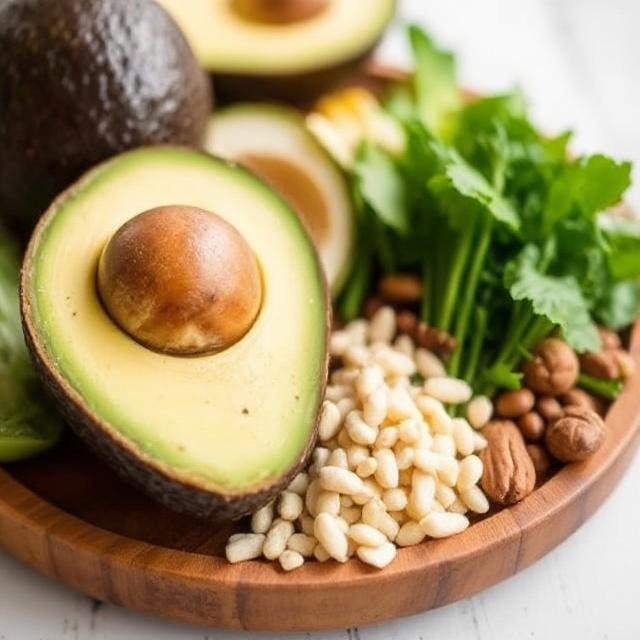As we age, our metabolism naturally begins to slow down. By the time we hit 60, many people experience noticeable changes in energy levels, weight gain despite similar eating habits, and slower muscle recovery. However, this decline isn’t something we have to passively accept. With intentional lifestyle adjustments, it’s entirely possible to rev up your metabolic engine even after 60. These strategies not only help maintain a healthy weight but also enhance energy, mood, and overall vitality. The key lies in understanding how metabolism works and what small yet impactful actions can make a difference. Below are 9 simple yet powerful ways to boost your metabolism after 60 and feel more energetic and alive than ever before.
1. Prioritize Strength Training
Lifting weights or engaging in resistance exercises is one of the most effective ways to increase metabolism, especially as we age. After 60, muscle mass tends to decline—a condition known as sarcopenia—which slows metabolic function. Strength training counters this by building and preserving lean muscle. Muscle tissue burns more calories at rest than fat, so increasing your muscle mass naturally raises your resting metabolic rate. You don’t have to become a bodybuilder to see benefits. Even using resistance bands or doing bodyweight exercises like squats, push-ups, and lunges can make a significant difference. Aim for two to three sessions per week, focusing on major muscle groups. Start light and increase gradually to avoid injury. Not only will your metabolism improve, but you’ll also notice increased strength, balance, and bone density. The consistency of training is what makes the metabolic change sustainable. Over time, this shift helps control weight, improves insulin sensitivity, and enhances daily functional movement—important factors for healthy aging. So, don’t fear the weights; they’re your secret weapon for turning back the metabolic clock.

2. Stay Hydrated All Day
Water plays a critical role in nearly every bodily function, including metabolism. As we age, our sense of thirst can diminish, leading many older adults to drink less water than they actually need. This lack of hydration can slow down metabolism significantly. Proper hydration supports cellular processes, digestion, nutrient transport, and waste removal—all of which contribute to a more efficient metabolism. Even mild dehydration can negatively affect your energy levels, brain function, and ability to burn calories. Start your day with a glass of water and aim to sip consistently throughout the day. A good rule of thumb is to drink half your body weight in ounces. Infusing water with slices of lemon, cucumber, or berries can make it more enjoyable. Also, eating water-rich foods like watermelon, cucumbers, and soups can help you stay hydrated. Avoid excessive caffeine and alcohol, as they can have a dehydrating effect. When you’re well-hydrated, your body can better convert food into energy, flush toxins, and maintain temperature—all vital for metabolism. Make water a daily ritual. Your body will thank you with more energy and a more responsive metabolic rate.

3. Eat More Protein-Rich Foods
Protein is not just for bodybuilders—it’s essential for maintaining and building lean muscle mass, which becomes even more important after 60. Muscle burns more calories than fat, even at rest, so the more lean muscle you have, the higher your resting metabolic rate will be. Consuming protein also has a higher thermic effect compared to fats and carbohydrates, meaning your body uses more energy to digest it. This makes meals rich in protein naturally more metabolism-boosting. Incorporate lean protein sources like chicken, turkey, eggs, Greek yogurt, legumes, tofu, and fish into your daily meals. Aim to include some form of protein in every meal, especially breakfast, to kickstart your metabolism early in the day. Protein also helps with satiety, reducing the likelihood of overeating. Spacing protein evenly throughout the day rather than consuming it all at once is also more beneficial. For those with dental issues, soft proteins like scrambled eggs, cottage cheese, or protein smoothies can be great options. With the right protein intake, your body stays stronger, metabolism stays efficient, and you’re better protected against age-related muscle loss and weight gain.

4. Don’t Skip Meals—Especially Breakfast
One of the most common mistakes among older adults trying to manage their weight is skipping meals, particularly breakfast. This can backfire by slowing your metabolism and triggering overeating later in the day. When you skip meals, your body senses a lack of fuel and conserves energy by lowering your metabolic rate. Starting your day with a healthy breakfast fuels your body, balances blood sugar, and sets your metabolism in motion. The best breakfasts combine protein, fiber, and healthy fats—for example, eggs with whole-grain toast and avocado, or Greek yogurt with berries and nuts. This combination keeps you satisfied and supports muscle maintenance and energy levels. Regular meals throughout the day—every 3 to 4 hours—help keep your metabolism steady and prevent extreme hunger, which can lead to poor food choices. Think of your metabolism like a fire: if you don’t add kindling regularly, it burns out. Consistency is key, and skipping meals interrupts this rhythm. So make breakfast a non-negotiable part of your day. It’s not just about calories—it’s about giving your body the fuel it needs to stay sharp, strong, and metabolically active.

5. Get Quality Sleep Every Night
Sleep is a cornerstone of metabolic health. Unfortunately, many people over 60 struggle with sleep disruptions due to hormonal changes, medications, or lifestyle factors. Poor sleep doesn’t just make you tired—it significantly impacts your metabolism. Lack of sleep affects hormones like insulin, cortisol, ghrelin, and leptin, which regulate hunger, stress, and fat storage. When you’re sleep-deprived, your body tends to crave more high-calorie, sugary foods, and your ability to process glucose efficiently drops, increasing the risk of weight gain and type 2 diabetes. Aim for 7–9 hours of quality sleep per night. Maintain a consistent sleep schedule, avoid heavy meals and electronics before bed, and create a relaxing bedtime routine. Your bedroom should be cool, dark, and quiet—optimal for restful sleep. Consider limiting caffeine and alcohol intake, both of which can interfere with deep sleep. Some people also benefit from natural sleep aids like magnesium, valerian root, or melatonin (with a doctor’s guidance). Prioritizing restorative sleep improves your energy, focus, and ability to make healthier choices, all while keeping your metabolism running smoothly. Sleep is your body’s natural reset button. Don’t underestimate its power.

6. Move More Throughout the Day
While formal exercise is important, simply moving more throughout the day can significantly increase your overall calorie burn and metabolic rate. This is known as NEAT—non-exercise activity thermogenesis—which includes all the calories you burn from daily activities like walking, gardening, housework, or even fidgeting. After 60, staying physically active becomes even more critical because sedentary habits can lead to muscle loss and a slower metabolism. Make movement part of your lifestyle: take the stairs, park farther from the store, stretch during TV commercials, or set a timer to get up and move every 30 minutes. Walking is one of the most accessible and effective ways to stay active—aim for at least 7,000–10,000 steps a day, if possible. Using a fitness tracker can be motivating and help you stay accountable. Every movement counts, and these little bursts of activity add up. Not only does regular movement help maintain a healthy weight, but it also improves circulation, joint health, and mental well-being. The more you move, the more your metabolism stays engaged. Keep your body in motion and your metabolism won’t have a chance to slow down.

7. Manage Stress to Protect Hormones
Chronic stress is a silent metabolism killer, especially in your 60s and beyond. Prolonged stress increases levels of cortisol—a hormone that, when elevated, encourages fat storage, especially around the abdomen. High cortisol can also interfere with thyroid function and insulin sensitivity, both of which directly impact metabolism. Managing stress is not just about peace of mind—it’s about metabolic health. Fortunately, there are many effective ways to reduce stress that don’t require drastic lifestyle changes. Practices like deep breathing, meditation, yoga, or tai chi can help regulate cortisol levels. Even spending time in nature or engaging in hobbies like painting, gardening, or music can lower stress. Social connections also play a major role; loneliness and isolation have been linked to higher stress and slower metabolism. Stay connected with friends and family, join community groups, or volunteer for a cause you care about. Identifying stressors and finding constructive ways to cope with them not only improves your mental health but also supports a healthier, more responsive metabolism. Remember: your mind and body are deeply connected. Taking care of one strengthens the other.

8. Include Healthy Fats in Your Diet
Fats have long been misunderstood, especially among older generations. Many people over 60 still fear fat due to outdated dietary guidelines. But healthy fats are essential for hormone production, brain health, and a well-functioning metabolism. Unlike trans fats and excessive saturated fats, sources of healthy fats—like avocados, olive oil, nuts, seeds, and fatty fish—support your body’s ability to burn fat efficiently. They also help keep you full and satisfied, which can prevent overeating and reduce sugar cravings. Including a moderate amount of fat in every meal can actually help with weight management. Omega-3 fatty acids, found in salmon, sardines, and flaxseeds, also reduce inflammation, which is often a barrier to weight loss in older adults. Healthy fats improve the absorption of fat-soluble vitamins like A, D, E, and K, all of which play important roles in metabolic and immune function. Don’t avoid fat—embrace the right kinds. They’re vital for balanced hormones, steady energy, and metabolic resilience. Your body needs fat to thrive, especially as it adapts to the changes that come with aging.

9. Don’t Fear Intermittent Fasting
Intermittent fasting (IF) has gained popularity for its ability to improve metabolic health, and it’s not just for the younger crowd. People over 60 can also benefit from time-restricted eating patterns, provided it’s approached mindfully. IF involves cycling between periods of eating and fasting, often following a 16:8 or 14:10 schedule—meaning you fast for 16 or 14 hours and eat within an 8 or 10-hour window. This method gives your digestive system a break, stabilizes blood sugar, and can enhance fat burning. After 60, metabolism tends to slow due to decreased muscle mass and hormonal shifts, but IF can help reset metabolic function and improve insulin sensitivity. It’s important to ensure you’re still getting enough nutrients during eating periods—focus on protein, fiber, and healthy fats. Always consult a doctor before starting any fasting plan, especially if you take medications or have health conditions. IF doesn’t mean starving—it means eating with intention and giving your body time to reset. When done correctly, it can be a powerful, age-appropriate tool for reviving a sluggish metabolism and supporting long-term health.

Aging may bring changes to your metabolism, but it doesn’t mean you’re doomed to feel sluggish or gain unwanted weight. The good news is that many factors influencing metabolic health are within your control—even after 60. By embracing a combination of movement, strength, hydration, nutrition, rest, and stress management, you can fuel your body to work efficiently and stay vibrant. It’s not about drastic diets or exhausting workouts—it’s about daily habits that add up over time. These simple strategies can help you reclaim energy, maintain a healthy weight, and live with vitality for years to come. Your metabolism is still very much alive—it just needs the right kind of attention.


